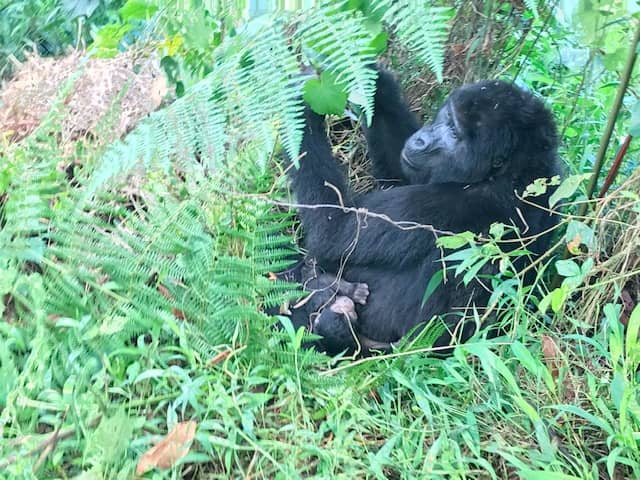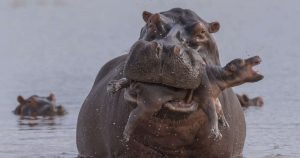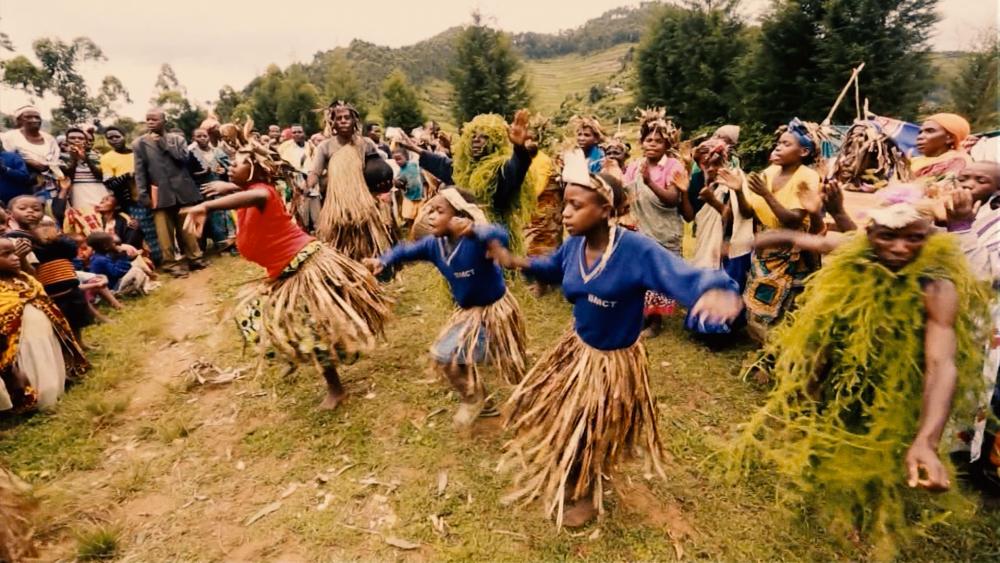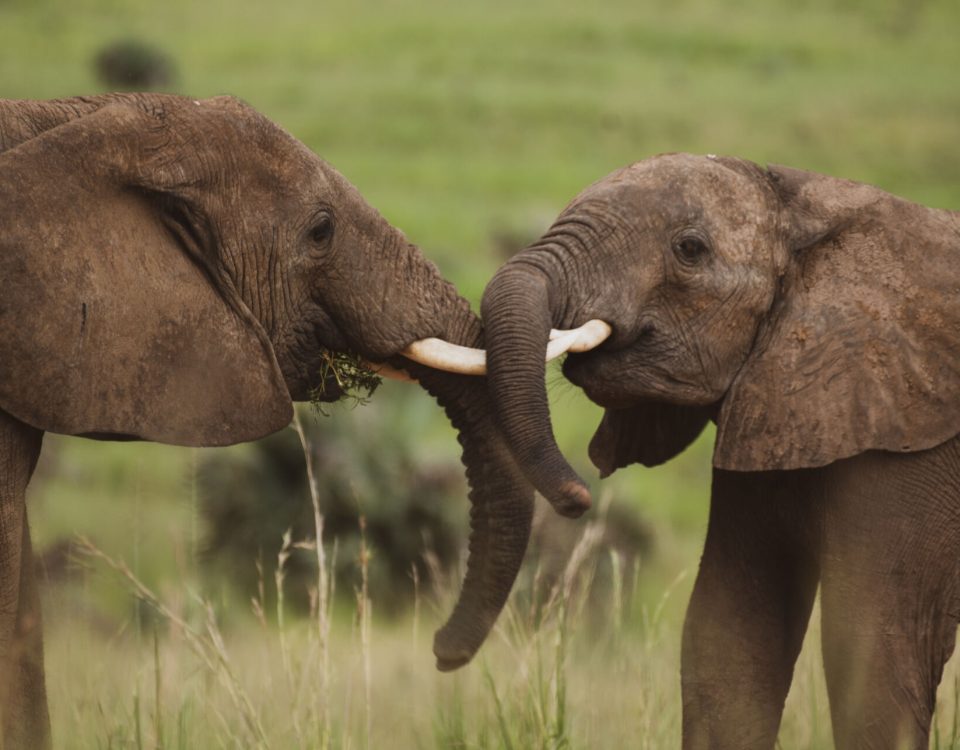
Mubare group, oldest gorilla family in Bwindi gets new baby gorilla October 2019 –Travel News
October 17, 2019Why Baby Hippos are Killed by the Adult Males
Why Baby hippos are killed by the adult males
Baby Hippos or calves are in most cases killed by the dominant adult males, but why does this happen? Here is why baby hippos are killed by the adult males;
Female hippos have a gestation of 8 months and when birth time is due they always move away from the pod (group of hippos). The females find a different territory and stay away until they give birth. After birth and the calf is able to run from threat, the mother then has to return the calf to the rest of the pod which is in most cases not welcomed.
This is so because the dominant males or bulls have a tendency of resenting the young ones (especially males) as a strategy of reducing competition for future dominance in the school of hippos. The mother has to fight and protect their young ones but at times fail and deaths can be registered. Sometimes the mother tends to move away with the young one and find a new residence.
Facts about Baby Hippos and Adults

Why Baby hippos are killed by the adult males – Baby Hippo attacked by the adult
- Hippos are semi aquatic and live mostly in water. They spend about 16 hours of the day under water.
- Baby hippo is also known as a calf, male a bull and the female a cow.
- They are considered the world’s deadliest large land mammal. Hippos are estimated to kill about 500 people per year in Africa.
- The dry season is the best time for conception for the females
- Female hippos have a gestation period of 8 months giving birth to a single calf at a time. They then spend the next 8 months nursing the calf.
- At birth the calf weighs between 23 to 50 kg. An average female weighs about 1,400kilograms while an average male weighs between 1,600-4500kilograms.
- Hippos have the ability to close their nose and ears to block out water.
- Baby hippos mature at about 5 to 7 years of age.
- The calf has ability to suckle under water though they cannot actually swim.
- Hippo life expectancy is estimated to be about 36 years.
- Adult hippos eat about 80 lbs/35kg of grass each night. They can traverse about 10km in a single night in search of food.
- When food is scarce, hippos can store food in their stomachs for about 3 weeks without eating.
- In size a hippo grows to between 3.3 – 5 meters long and up to 1.6m tall at the shoulder.
- Females grow to maturity faster than males
- The full name for hippos is hippopotamus, a Greek word meaning River horse
- Hippos do not swim but bounce in the water
- They may be heavy but can run for about 45km in 1 hour
Where to see Hippos in Uganda
On a safari to Uganda and wondering where you can have a glimpse of the hippos then these spots are the best to visit.;
-
Kazinga Channel of Queen Elizabeth National Park.
Kazinga channel is one of the best boat cruise areas for a wildlife safari in Uganda. The 40km long channel connecting lakes Edward and George in Queen Elizabeth National Park is a good habitat for hippos. The channel has the highest concentration of hippos in the whole of Africa with hundreds of hippos in the water.
Within Queen Elizabeth National Park, you can also see hippos at the Ntungwe River at the ishasha sector of the park famed for tree climbing lions.
-
Murchison Falls National Park
A boat cruise during a safari in Murchison Falls National Park is a great opportunity to see hippos. You can spot the Hippos while on the Nile River boat cruise, on the down river boat ride to the Albert Nile and even on a game drive near Albert Nile.
-
Lake Mburo National Park
A boat cruise on Lake Mburo National Park‘s Lake Mburois another great way of seeing hippos during a Uganda wildlife safari. The hippos can be seen during any of the boat cruises on the park though they are not as many as those in the Kazinga channel or in Murchison Falls National Park.
-
Semliki Wildlife Reserve
In the Semliki Wildlife Reserve close to Semliki National Park, you can see the hippos in the Semliki River. The river crosses both Uganda and the Democratic Republic of Congo. However, due to the conflicts in the Democratic Republic of Congo, the hippo population greatly decreased on the Semliki River.
Uganda tours offer a lot and therefore it’s advisable for travelers on long safaris in Uganda to combine wildlife safaris with Uganda chimp trekking tours, bird watching safaris or Uganda gorilla trekking safaris
In case you would love to travel on a low budget and still have fun, you can reach us on these emails – wildjungletrails@gmail.com, tours@wildjungletrails.com or call us on (+256) 777690798 / (+256) 414663115.
Authored By Wild Jungle Trails Safaris




